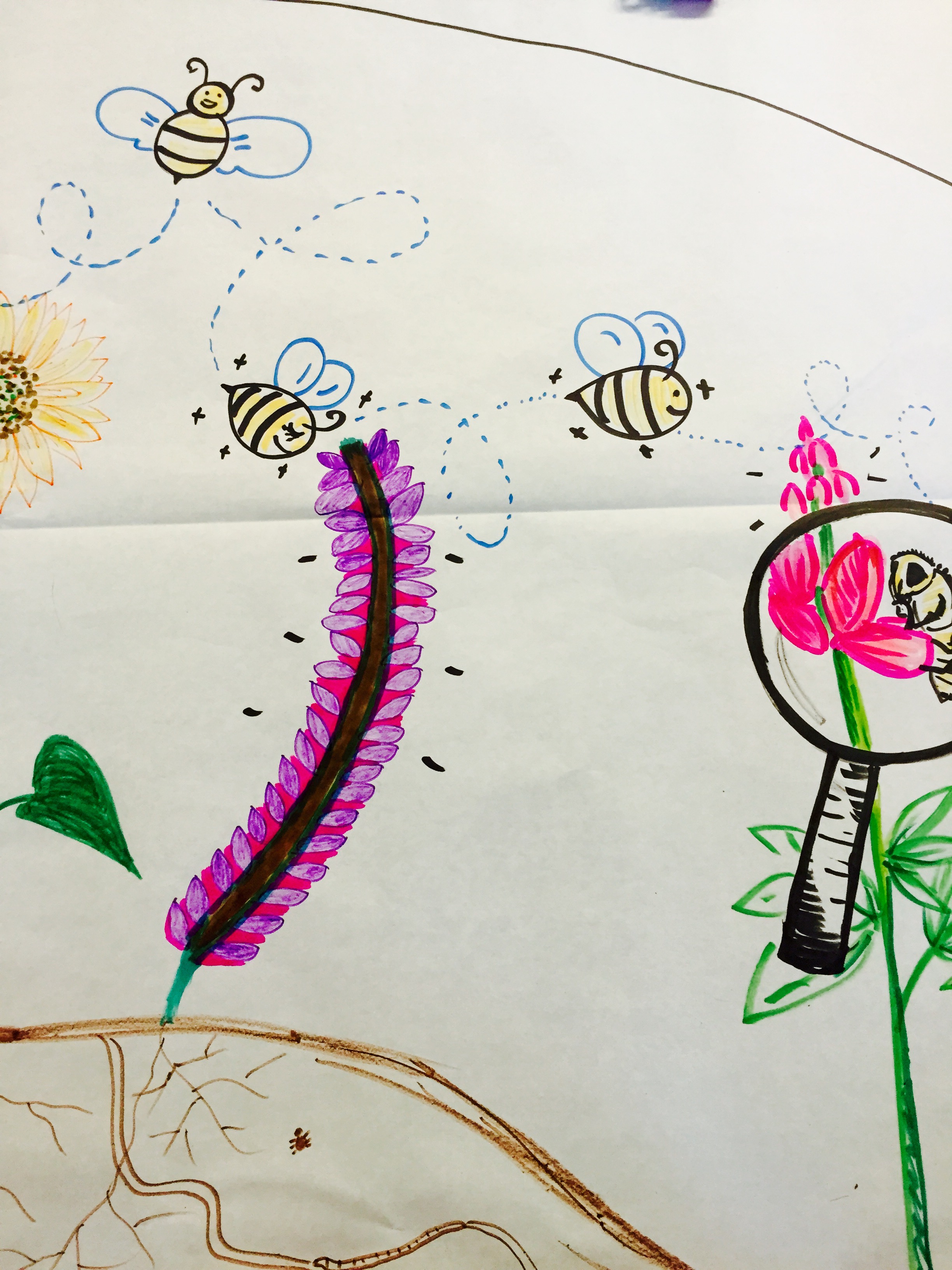Inquiry in Practice II: School Gardens and Storytelling
This week of learning about school gardens and being the garden has been very inspiring and exciting! I feel as though in one short week I have been given some very practical skills about how I would implement a garden at a future school. Using a garden or outdoor space as a teaching tool is an extremely valuable asset in terms of introducing place-based learning, experiential and hands-on learning, and integrating subject matter across the curriculum.
Initially I was drawn to the UBC Orchard Garden because of my love of the outdoors and wanting to learn how to garden, but being intimidated by the thought of beginning my own garden. This experience so far has been so much more than just spending time outdoors in the garden. Learning about the layout of the garden, visiting Roots on the Roof, discussing the process of starting a school garden, musical storytelling and soundscaping has given much to process this week. The time spent working and weeding in the garden has been welcomed. It has opened up space for me to think, reflect and process not only this last week learning about gardens, but also about my 10 week practicum. Life has been moving at such a rapid pace lately that the time spent in the garden has been extremely rejuvenating for me. This has led me to realize how beneficial having a school garden, not only to learn, plant and harvest from, but to be used as a calm space; a space that students could use for reflection and quiet time.
Earlier in the week, John Ames introduced us to the concept of musical storytelling. I immediately connected with this pedagogy. We spent ~50 minutes of silent work time in the garden participating in the “Draw me a story” activity. We were encouraged to draw a story of the relationships and partnerships that are found in garden spaces. This was a very ‘Montessori’ experience for me as I sprawled myself out on on a mat and worked quite contently and quietly in the ‘flow’. It was incredibly powerful to have time in the middle of the afternoon, outdoors, to process, draw, and just be. I thought about my students, working on their mats during my practicum and how they must feel during a work cycle period when they are inspired and get into a ‘flow’.
Our introduction to musical storytelling also reminded me of some of the work I did during my practicum. I taught the entire science curriculum in my intermediate Montessori grade 4/5/6 classroom. I often used drama, skits, tableau and singing activities to get students moving their bodies in order to understand difficult scientific concepts. The students often remarked that they learn best through drama and movement, and so I did my best to incorporate that in everything we did. I also implemented the use of visual journals. The journals were introduced as a way to blend art and science and consolidate learning. They were a place for questions, wonders, understanding, illustrations, interesting newspaper articles… anything that would promote critical thinking and spark discussion in our weekly gallery walks. Students demonstrated an impressive range of creativity, critical thinking and looked forward to sharing their favourite pages. Learning about musical storytelling solidified my belief in using drama and the arts as a valuable tool across all subject matter.
Much of our discussions this week focused on time, and the time it takes to implement and care for a garden. Gardens take time and energy — how do you make time? In an elementary school I’ve learned that time is precious and there isn’t much of it. Of course having a school garden is a wonderful idealistic idea and I hope to be able to implement one in the future. I believe that with the new curriculum focusing more on skills rather than content teachers will have more flexibility in terms of using their time to build and care for a garden. Learning about gardens, visiting various gardens at UBC and learning the practical steps of starting a garden has expanded my views as an educator to the potential benefits of teaching and using the garden as a food source. With this learning, I feel much more at ease in terms of taking the steps needed to spearhead the implementation of a school garden in the future.
